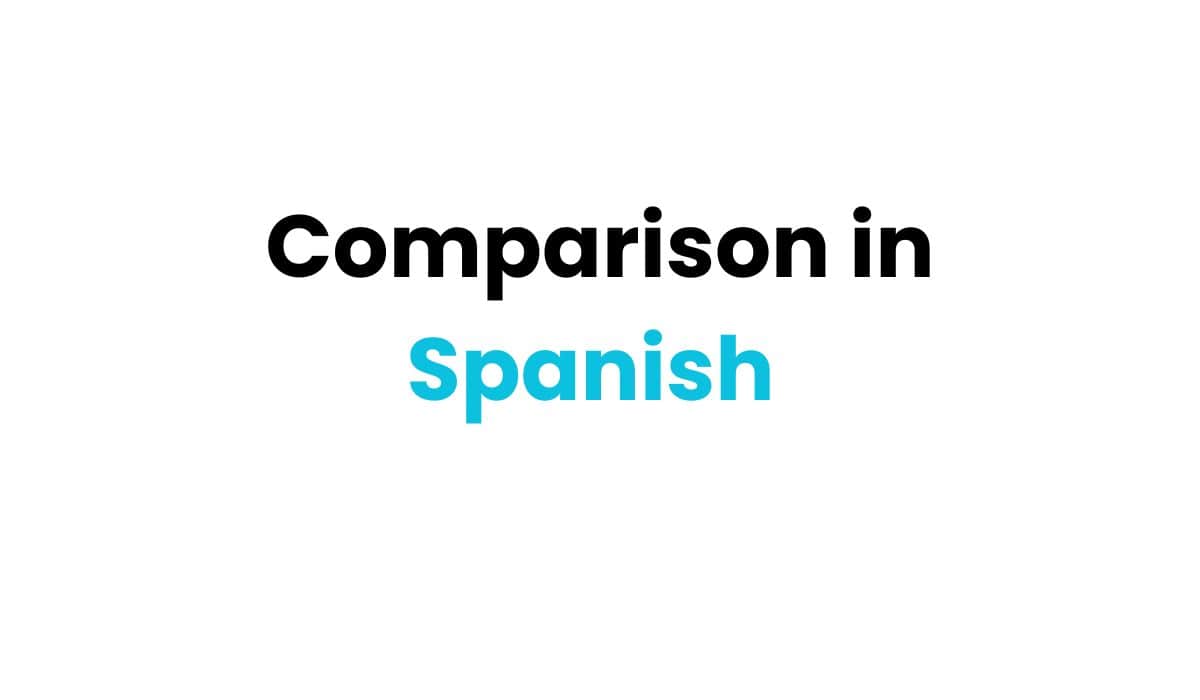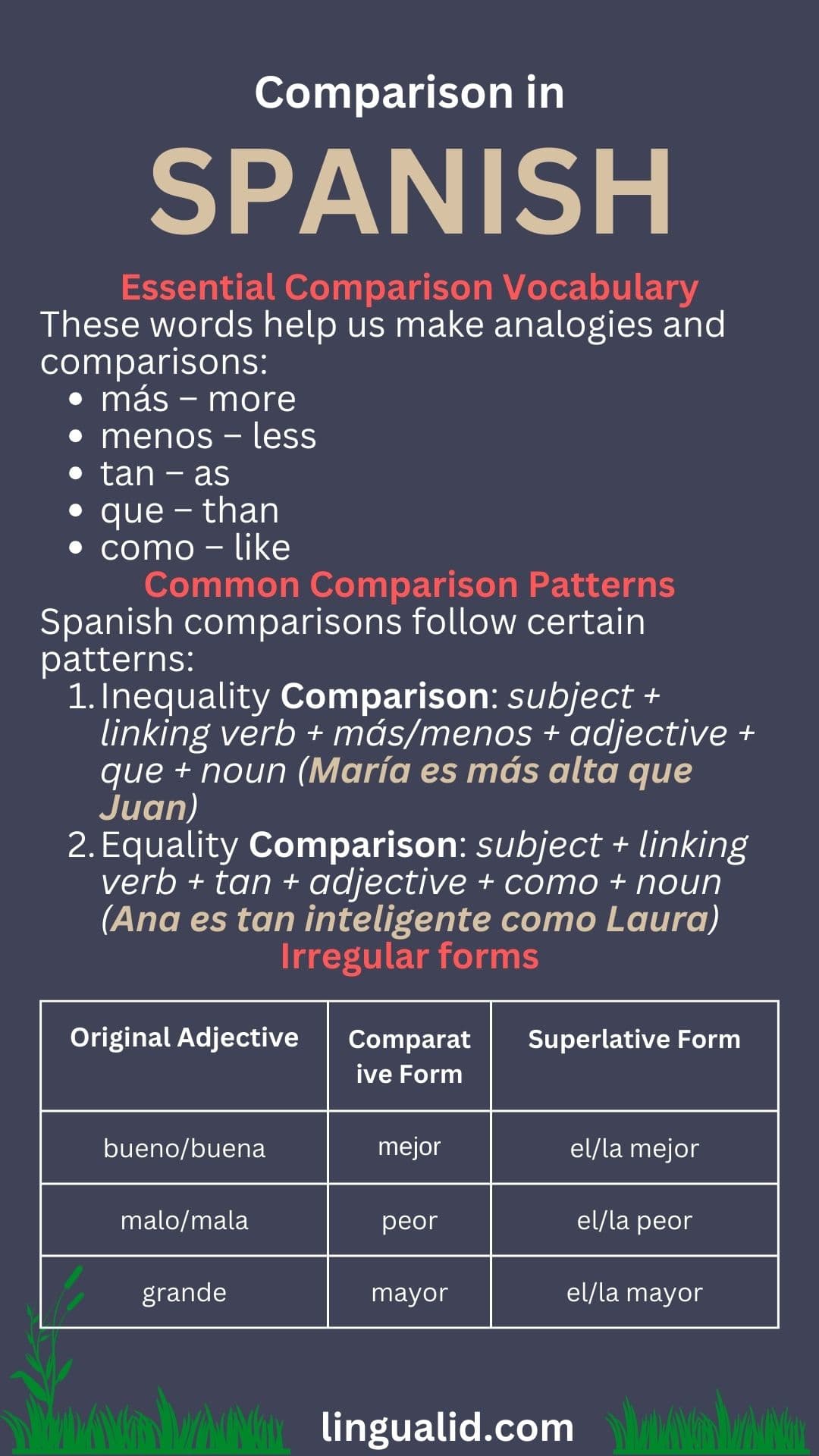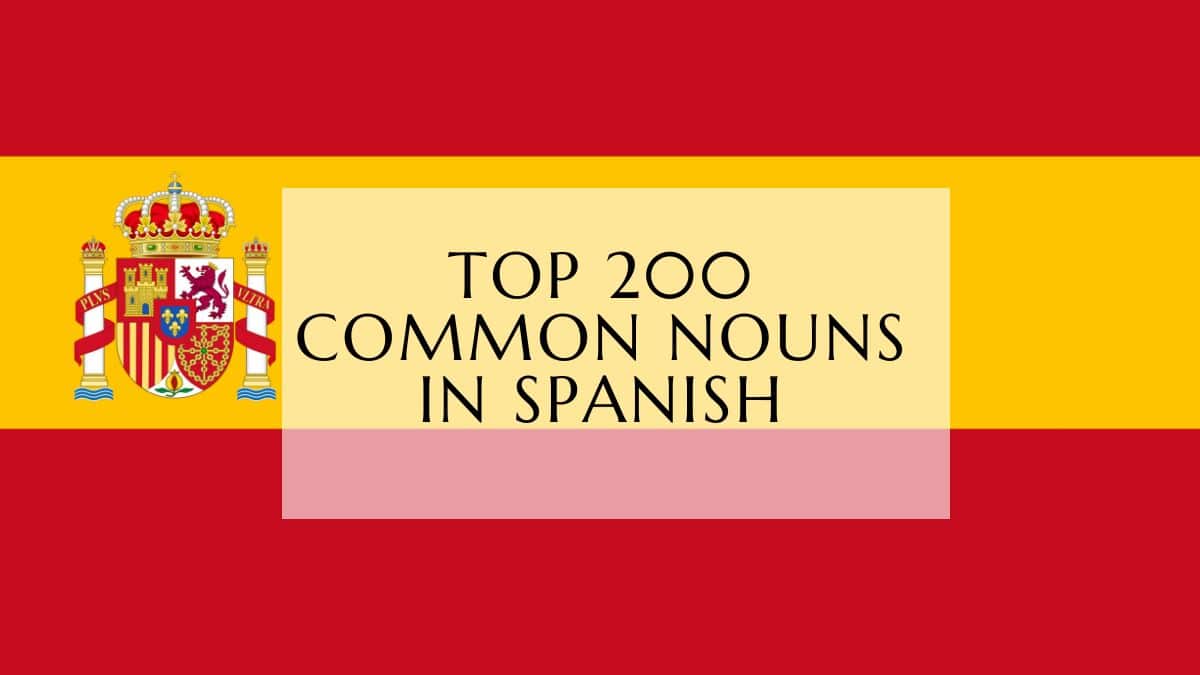Learning to compare in Spanish can make a big difference. It helps you express differences and similarities clearly. This skill shows you how Spanish speakers use language to highlight relationships.
Spanish has special ways to compare people, objects, and experiences. You can say someone is taller, which city is prettier, or how useful a language is. These tools are key for clear communication.

Key Takeaways
- Spanish comparisons rely on specific grammatical structures
- Adjective placement differs from English language rules
- Comparative forms use “más” and “menos” consistently
- Gender and number agreement is crucial in comparisons
- Irregular adjectives have unique comparative forms
- Context determines the most appropriate comparison method
- Key Takeaways
- Essential Comparison Vocabulary
- Common Comparison Patterns
- Using Más with Adjectives
- Adverbial Comparisons
- Noun-based Comparisons
- Basic Structure and Usage
- Common Mistakes to Avoid
- Practice Examples
- Rules for Using Tan
- When to Use Tanto/Tanta/Tantos/Tantas
- Real-life Examples
- Relative Superlative Structure
- Absolute Superlative Methods
- Regional Variations
- Formation Rules for -ísimo
- Special Cases and Exceptions
- Common Usage Examples
- What's the difference between más and mejor when making comparisons in Spanish?
- How do I form comparatives of equality in Spanish?
- What are some common mistakes to avoid when making comparisons in Spanish?
- How do I use the -ísimo suffix in Spanish comparisons?
- What are irregular comparative forms in Spanish?
- How do I form comparatives of inferiority in Spanish?
- What is the role of ser and estar in making comparisons?
Understanding Basic Spanish Comparison Structures
Spanish comparisons are a fascinating journey in language. They help us talk about relationships between people, objects, and ideas. Learning to compare involves grasping subtle differences and key structures that add depth to our words.
Two important verbs, ser and estar, are at the heart of Spanish comparisons. They help us form comparisons that show fine differences in meaning.
Essential Comparison Vocabulary
To get good at Spanish comparisons, you need to know key words. These words help us make analogies and comparisons:
- más – more
- menos – less
- tan – as
- que – than
- como – like
Common Comparison Patterns
Spanish comparisons follow certain patterns. These patterns help us make clear and meaningful expressions:
- Inequality Comparison: subject + linking verb + más/menos + adjective + que + noun
- Equality Comparison: subject + linking verb + tan + adjective + como + noun
Here’s a quick guide to comparison structures:
| Type of Comparison | Structure | Example |
|---|---|---|
| Superiority | más + adjective + que | María es más alta que Juan |
| Inferiority | menos + adjective + que | Carlos es menos inteligente que Pedro |
| Equality | tan + adjective + como | Ana es tan inteligente como Laura |
By learning these basic structures, you’ll be able to make detailed and accurate comparisons in Spanish. This will take your language skills to new levels.
Comparatives of Superiority in Spanish
Learning to compare things in Spanish is key. Spanish has many ways to show who or what is better. This lets speakers talk about different qualities with detail and precision.
The main way to show superiority in Spanish is with the word más. This means “more” in English. It’s used in many ways to make comparisons.
Using Más with Adjectives
Comparing adjectives in Spanish is simple:
- más + adjective + que
- Example: María es más alta que Juan (Maria is taller than John)
- Example: Mi casa es más grande que tu apartamento (My house is bigger than your apartment)
Adverbial Comparisons
Adverbial comparisons also use más to show who is better:
- más + adverb + que
- Example: Él estudia más rápidamente que su hermana (He studies more quickly than his sister)
Noun-based Comparisons
Spanish also lets you compare nouns with más:
| Structure | Example |
|---|---|
| más + noun + que | Tengo más libros que tú (I have more books than you) |
| más + quantity + noun + que | Compré más de cinco libros (I bought more than five books) |
Getting good at these comparison structures will boost your Spanish skills. You’ll be able to share fine differences clearly and with confidence.
Comparison in Spanish: Mastering the Fundamentals
Learning Spanish comparisons is key to improving your language skills. It’s about understanding how to connect different parts of the language. This opens up new ways to communicate.
Spanish comparisons have several important parts. These parts make simple talks into deep conversations. Let’s look at the main elements:
- Positive degree construction: tan + adjective + como
- Comparative degree construction: más/menos + adjective + que
- Superlative degree construction: el/la/los/las + más/menos + adjective + de
Learning irregular forms needs extra focus. Some words don’t follow the usual rules. Here are a few examples:
| Original Adjective | Comparative Form | Superlative Form |
|---|---|---|
| bueno/buena | mejor | el/la mejor |
| malo/mala | peor | el/la peor |
| grande | mayor | el/la mayor |
Practice is key to mastering these forms. Start with simple sentences and add complexity as you get better. Remember, practice and context are your best teachers.
Getting better at Spanish comparisons will boost your speaking skills. Enjoy the learning process and don’t worry about mistakes.
Comparatives of Inferiority with Menos
Learning about comparatives of inferiority is key for those studying Spanish. It helps us talk about the similarities and differences between things, people, and ideas. The idea of similitud is very important in this.

Basic Structure and Usage
The basic way to say something is less in Spanish is with menos followed by an adjective or adverb and que. This lets us show similarities while pointing out differences between two things.
- Menos + adjective + que
- Menos + adverb + que
Common Mistakes to Avoid
Many Spanish learners make mistakes with comparatives. Some common errors include:
- Forgetting to use que after the comparative
- Incorrect placement of menos
- Not matching gender and number
Practice Examples
Let’s look at some examples to help you get it:
| Spanish Phrase | English Translation |
|---|---|
| Mi hermano es menos alto que mi padre | My brother is less tall than my father |
| Ella corre menos rápido que su hermana | She runs less quickly than her sister |
| Este libro es menos interesante que el anterior | This book is less interesting than the previous one |
By learning these comparative structures, you’ll get better at making comparisons in Spanish. This will make your Spanish more nuanced and sophisticated.
Irregular Comparative Forms
Spanish comparison has its own set of challenges with irregular forms. Unlike regular comparatives, these special forms add depth and nuance. Mastering these irregular comparatives can greatly improve your Spanish skills.
The Spanish language has four main irregular comparative adjectives. These are:
- Mejor (better)
- Peor (worse)
- Mayor (older/bigger)
- Menor (younger/smaller)
These irregular forms don’t follow the usual rules. They don’t need to match the gender of the noun but must be the same in number. Learning these takes about 10 minutes and can really boost your skills in contrastación.
“Learning irregular comparatives opens doors to more sophisticated Spanish communication.”
Now, let’s see some examples of these irregular comparatives in use:
| Irregular Form | Example Sentence | English Translation |
|---|---|---|
| Mejor | Él es mejor que yo | He is better than me |
| Peor | Mi hermano es peor estudiante | My brother is a worse student |
| Mayor | María es la mayor de la familia | Maria is the oldest in the family |
| Menor | Juan es menor que María | Juan is younger than Maria |
While there are four irregular forms, Spanish learners also have regular comparative structures. For example, más grande (bigger) or más pequeño (smaller). This flexibility makes comparison in Spanish rich and varied.
Equality Comparisons Using Tan and Tanto
Learning to compare things in Spanish is key. You need to know about tan and tanto. These words help you say things are the same in a clear way.
When you make comparisons in Spanish, you must follow rules for tan and tanto. They help you say things are exactly the same.
Rules for Using Tan
Tan is used with adjectives and adverbs for equal comparisons. It doesn’t change form.
- Structure: tan + adjective/adverb + como
- Example: “El libro es tan interesante como la película” (The book is as interesting as the movie)
- Example: “Corro tan rápido como mi hermano” (I run as fast as my brother)
When to Use Tanto/Tanta/Tantos/Tantas
Tanto changes with the noun’s gender and number. This makes comparisons more flexible.
| Form | Usage | Example |
|---|---|---|
| tanto | Masculine singular | Tiene tanto dinero como su padre |
| tanta | Feminine singular | Tiene tanta paciencia como un maestro |
| tantos | Masculine plural | Compró tantos libros como su amigo |
| tantas | Feminine plural | Tiene tantas plumas como su colega |
Real-life Examples
Here are some examples of using these comparison structures:
- “Juan es tan alto como María” (Juan is as tall as Maria)
- “Tengo tanto tiempo libre como tú” (I have as much free time as you)
“Language learning is about understanding subtle connections between words and meanings.”
Practice these to get better at comparing in Spanish. It will help you talk more clearly!
Spanish Superlatives: Expressing the Extreme
Spanish superlatives help learners contrastar and confrontar ideas by showing the most extreme qualities. These tools let speakers show the highest or lowest degree of a trait with precision and flair.
In Spanish, superlatives have two main types: relative and absolute. Relative superlatives compare within a group. Absolute superlatives highlight extreme qualities.
Relative Superlative Structure
- Basic formula: el/la/los/las + más/menos + adjective
- Example: Juan es el estudiante más inteligente de la clase (Juan is the most intelligent student in the class)
Absolute Superlative Methods
- -ísimo/a suffix: altísimo (extremely tall)
- Muy + adjective: muy interesante (very interesting)
- Sumamente + adjective: sumamente emocionante (extremely exciting)
Some interesting irregulars include mejor (best), peor (worst), mayor (eldest), and menor (youngest).
Regional Variations
Interestingly, how superlatives are used varies across Spanish-speaking regions. Spain often uses -ísimo endings. But, some Latin American countries prefer re or recontra before adjectives.
| Superlative Type | Example | English Translation |
|---|---|---|
| Regular | el más moderno | the most modern |
| Irregular | el mejor | the best |
| Absolute | altísimo | extremely tall |
Learning Spanish superlatives changes how you communicate. It lets you make nuanced comparisons with depth and creativity.
The -ísimo Suffix and Its Applications
Spanish learners find a powerful tool in the -ísimo suffix. It lets speakers describe qualities intensely. This tool adds depth to descriptions, matching emotions closely.
The -ísimo suffix makes ordinary words into strong expressions. It boosts simple descriptions into vivid, emotional statements.
Formation Rules for -ísimo
Knowing how to form -ísimo is key. Here are the main steps:
- Remove the final vowel of the adjective
- Add -ísimo for masculine singular form
- Adjust endings for gender and number
Special Cases and Exceptions
Some adjectives need extra care with -ísimo:
- Adjectives ending in -ble drop the final -e before adding -ísimo
- Irregular adjectives might change completely
- Monosyllabic adjectives sometimes have unique transformations
Common Usage Examples
| Base Adjective | -ísimo Form | English Translation |
|---|---|---|
| grande | grandísimo | extremely big |
| pequeño | pequeñísimo | extremely small |
| rico | riquísimo | extremely rich |
Mastering the -ísimo suffix makes Spanish communication more precise. It lets speakers express emotions and intensify descriptions with great accuracy.
Common Mistakes in Spanish Comparisons
Learning Spanish comparisons can be challenging. Many learners face common issues. It’s important to grasp the differences between similitud and semejanza.
Here are the most common mistakes:
- Misusing más and menos incorrectly
- Confusing irregular comparative forms
- Improper use of tan and tanto
The rule for expressing inequality is: más / menos + adjective / adverb / noun + que. Many struggle with this basic rule. This leads to incorrect comparisons.
Some common errors include:
- Forgetting that mejor (better) and peor (worse) have their own rules
- Swapping tan and tanto, which changes the meaning
- Ignoring the rules for equality comparisons
Practice is key to avoid these mistakes. Focus on the similarities between different comparisons. Understanding Spanish comparison rules is crucial.
Remember, being precise is vital in Spanish comparisons. Each word matters a lot.
Conclusion
Learning Spanish comparison skills makes language learning more than just basic talking. It lets you express yourself in a detailed way. By understanding contrastación, you can improve your language skills a lot.
Mastering tan and tanto takes practice and paying close attention to details. Each comparison is a chance to show off your language skills. You can talk about small differences or big ideas.
Good Spanish comparison is not just about remembering rules. It’s about really getting how language shows relationships. By working hard, you’ll talk more clearly and deeply. Don’t worry about mistakes, they help you get better.
Your Spanish learning journey doesn’t stop here. Keep practicing and stay curious. Remember, learning a language is a fun, ongoing journey. With hard work and love, you’ll use these skills to express yourself in amazing ways. ¡Adelante con tu aprendizaje!
FAQ
What’s the difference between más and mejor when making comparisons in Spanish?
How do I form comparatives of equality in Spanish?
What are some common mistakes to avoid when making comparisons in Spanish?
How do I use the -ísimo suffix in Spanish comparisons?
What are irregular comparative forms in Spanish?
How do I form comparatives of inferiority in Spanish?
What is the role of ser and estar in making comparisons?
Oualid Cheddadi is the founder of Lingualid, a platform that inspires independent language learners worldwide, regardless of the language they are learning. The name “Lingualid” is derived from the Portuguese word for “language,” “língua,” and the last three letters of Oualid’s name, “Lid.”



